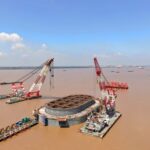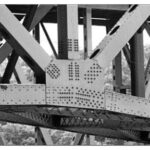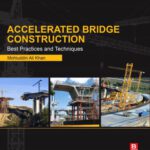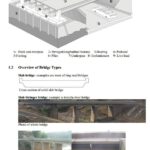
How Artificial intelligence (AI) can optimize bridges design?
7 October 2023Table of Contents
How Artificial intelligence (AI) can optimize bridges design?
Introduction:
Bridges are important pieces of infrastructure that connect communities and facilitate transportation. Bridge design requires careful consideration of various factors, including structural integrity, safety, cost-effectiveness and environmental impact.
With the advent of artificial intelligence (AI), engineers and designers now have powerful tools to optimize bridge design.
In this article, we will examine how artificial intelligence can revolutionize the bridge design process and increase its efficiency .
1. Data analysis and prediction :
AI algorithms can analyze massive amounts of bridge design data, including geological studies, traffic patterns, and weather conditions. Conditions and historical performance data.By processing this information, AI can recognize patterns and make accurate predictions about how different bridge structures will perform under different conditions. This allows engineers to optimize bridge designs for maximum safety and durability.
2. Structural Optimization :
Artificial intelligence can help optimize the structural design of bridges by considering multiple parameters simultaneously. Using algorithms such as genetic algorithms or neural networks, artificial intelligence can explore a wide range of design possibilities and identify the most efficient and cost-effective solutions. This approach can result in bridges that use fewer materials, have a lower environmental impact, and can better withstand various stresses and strains.
3. Simulation and Testing:
AI can simulate and test bridge designs in virtual environments, allowing engineers to evaluate their performance before construction begins. Using AI-based simulations, engineers can analyze the behavior of different bridge structures in different scenarios, such as earthquakes, heavy traffic, or extreme weather conditions. This helps identify potential vulnerabilities and allows for changes early in the design process, saving time and resources.
4. Maintenance and Monitoring:
AI can play a key role in bridge maintenance and monitoring. By integrating sensors and IoT devices into bridge structures, AI algorithms can continuously monitor the health and performance of bridges in real-time.This allows early detection of structural problems such as cracks or corrosion and enables timely maintenance. AI can also analyze collected data to predict maintenance needs, optimize inspection schedules, and extend the life of bridges.
5. Cost Optimization:
AI can help optimize bridge design and construction costs. By analyzing historical data and considering various factors such as material costs, labor costs, and construction techniques, AI algorithms can suggest cost-effective design alternatives. This can result in significant savings without compromising the structural integrity and safety of the bridge.
6. Conclusion:
Integrating artificial intelligence into bridge design processes has the potential to revolutionize the way bridges are designed, built and maintained. By leveraging AI capabilities in data analysis, prediction, structural optimization, simulation, and cost optimization, engineers can build safer, longer-lasting, and more cost-effective bridges. As artificial intelligence continues to develop, we can expect new innovations in bridge design that will ultimately lead to the development of smarter, more sustainable infrastructure that benefits society.








